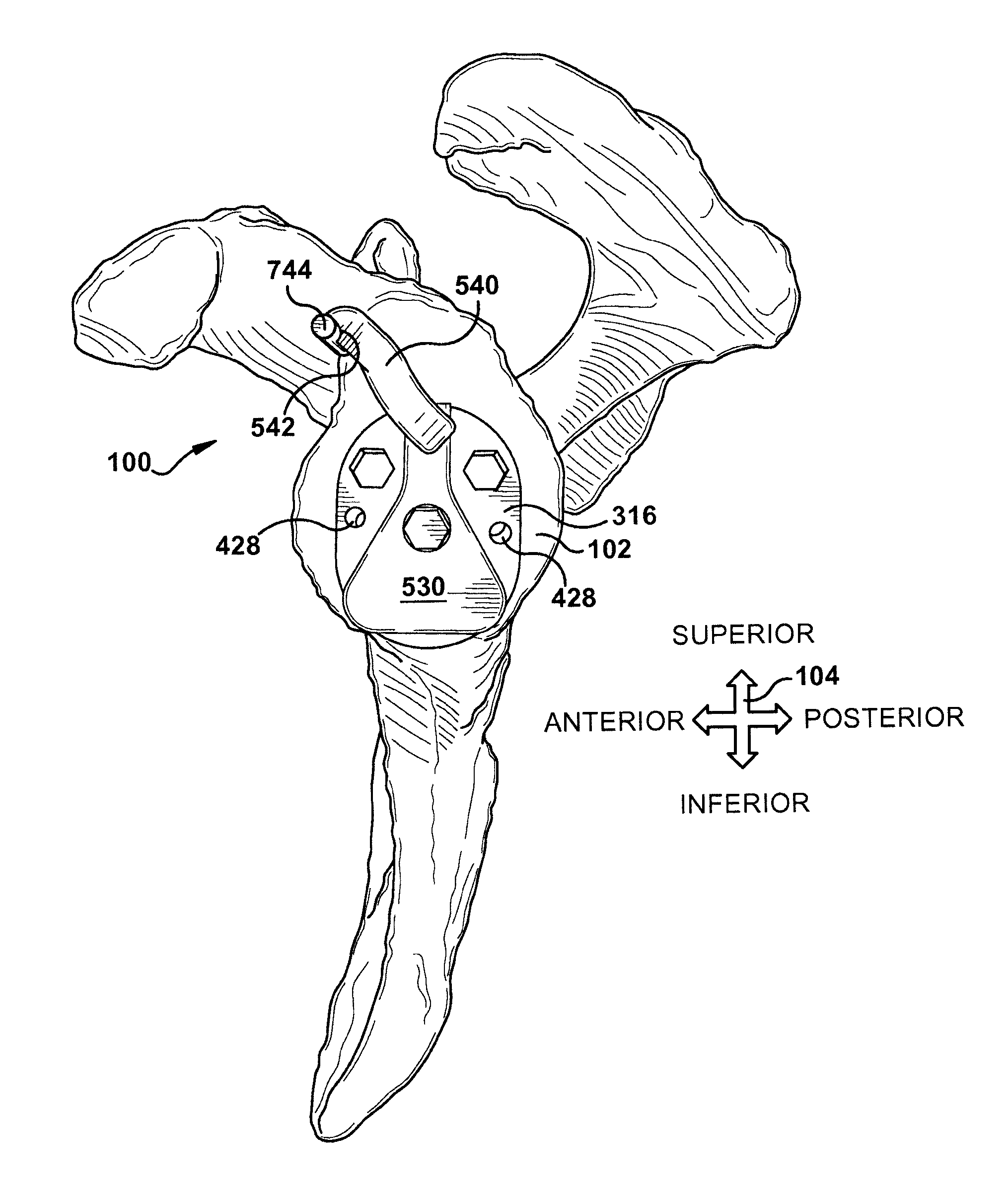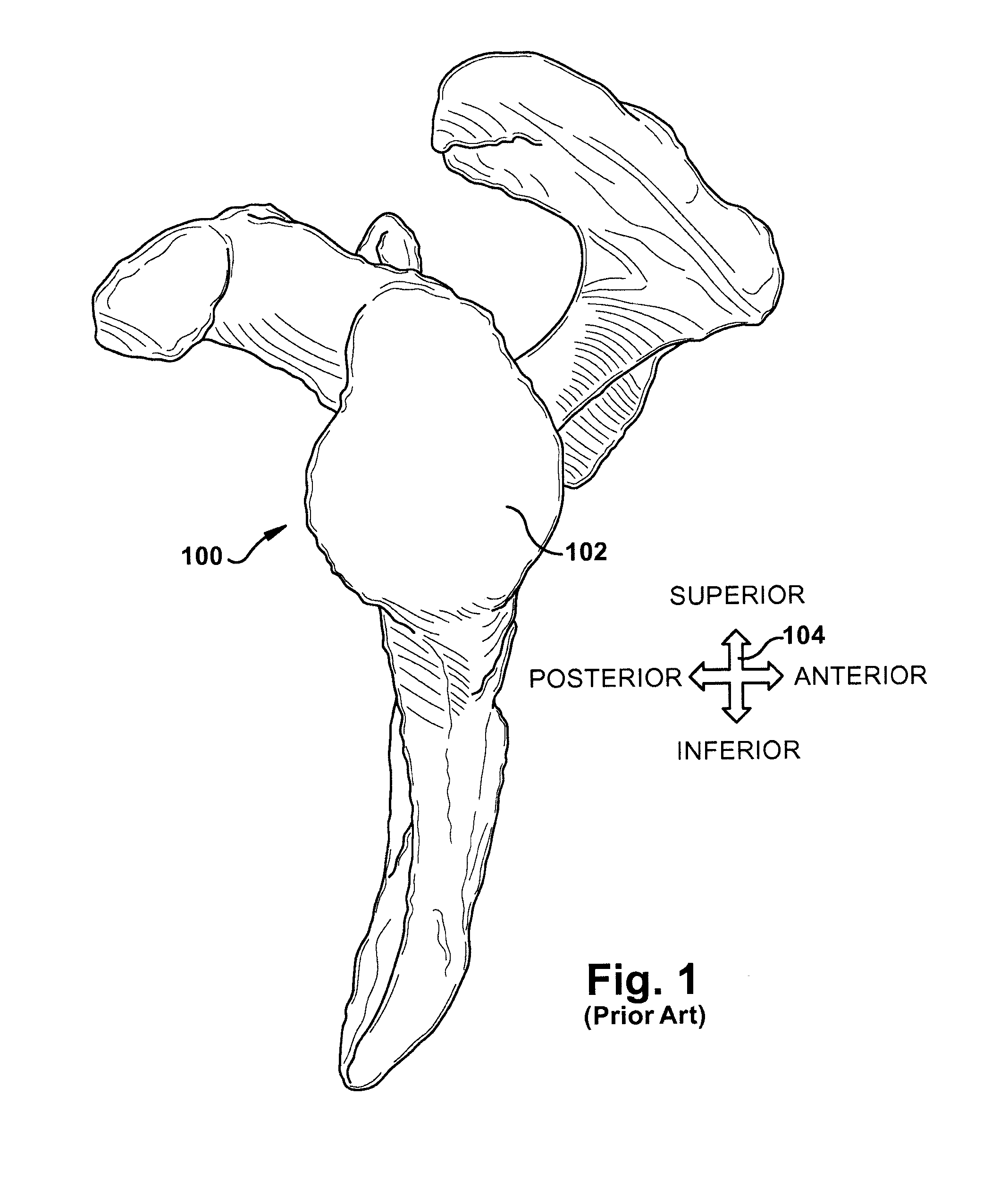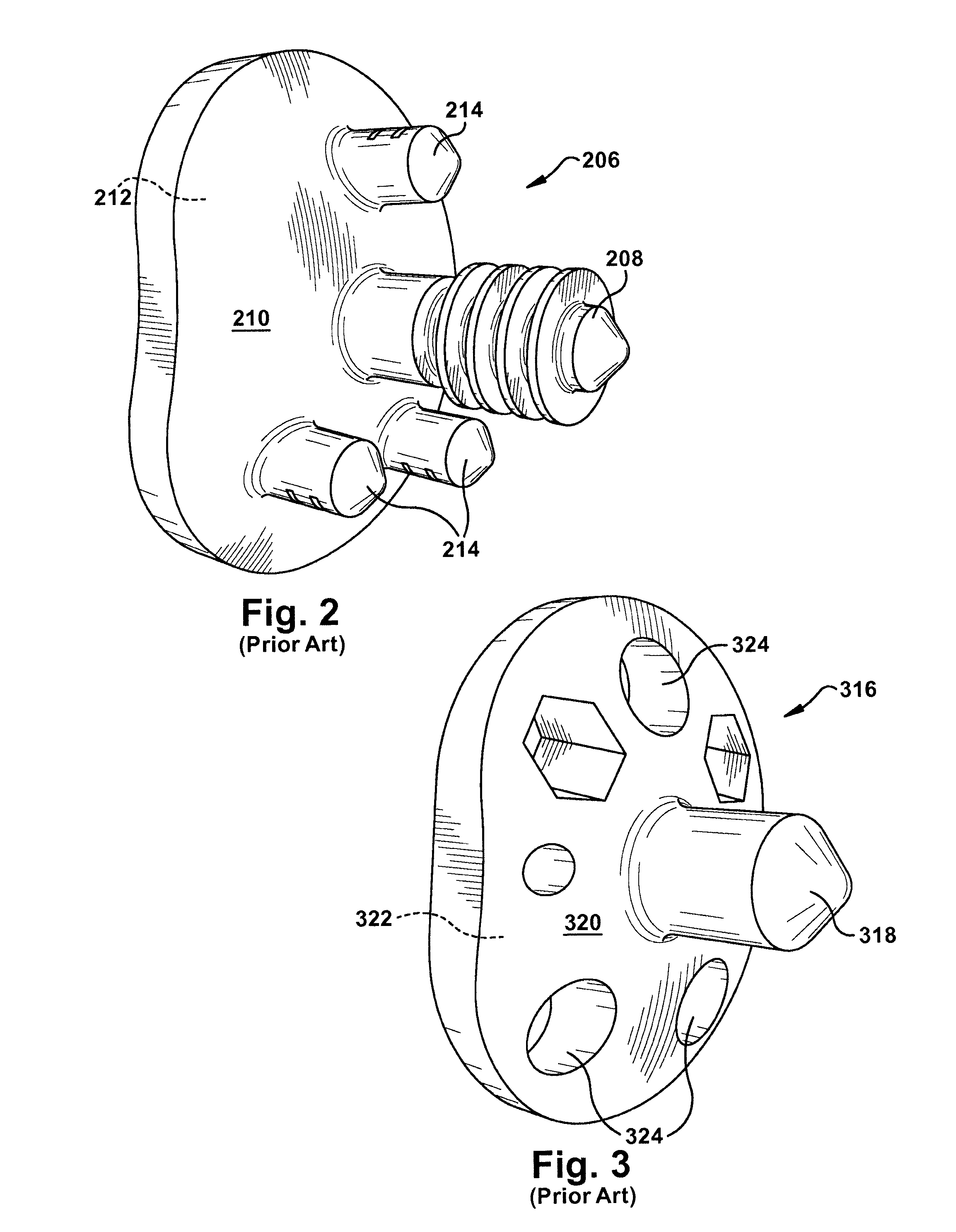Guide for assisting with arrangement of a stock instrument with respect to a patient tissue
a technology for surgical instruments and patient tissue, applied in the field of surgical guides, can solve the problems of bone deformation, end up deteriorating, and unable to function altogether, and achieve the effect of reducing the number of surgical guides
- Summary
- Abstract
- Description
- Claims
- Application Information
AI Technical Summary
Benefits of technology
Problems solved by technology
Method used
Image
Examples
first embodiment
[0027]During installation of the glenoid implant 206, a shaft aperture (not shown) is drilled into the patient tissue (here, the patient's glenoid fossa 102) at a predetermined location and a stock instrument is used to help prepare the patient tissue surface. The stock instrument is depicted here as a glenoid instrument 316 according to the present invention, shown in FIG. 3. Suitable instruments 316 similar to those shown herein are available from DePuy Orthopaedics, Inc., of Warsaw, Ind. The instrument 316 includes an instrument shaft 318, a lower instrument surface 320, an upper instrument surface 322 (hidden in this view, as shown via dashed line), and at least one guide interacting feature 324.
[0028]The term “stock” is used herein to indicate that the component indicated is not custom-manufactured or -configured for the patient, but is instead provided as a standard inventory item by a manufacturer. A particular stock component may be selected by the user from a product line r...
second embodiment
[0057]The lower instrument surface 320′ of the instrument 316′ of the second embodiment also includes a plurality of holding teeth 948 which can be selectively pushed down into the patient tissue to resist rotation / pivoting of the instrument about the landmark within the locating aperture 846.
[0058]A guide 530′ according to the second embodiment of the present invention is shown in FIGS. 10-11. Like the instrument 316′, the guide 530′ includes a locating aperture 846. The guide 530′ may include one or more handling features 426′ (two shown), which may be configured to accept a handling tool (not shown) or otherwise to assist the user in moving the guide at or near the surgical site.
[0059]In use, the guide 530′ of the second embodiment operates similarly to the guide 530 of the first embodiment, as is shown in FIG. 12. The instrument 316′ of FIGS. 10-11 is placed upon the glenoid fossa 102 surface. Optionally, a landmark (not shown) may have been previously placed in the glenoid foss...
PUM
 Login to View More
Login to View More Abstract
Description
Claims
Application Information
 Login to View More
Login to View More - R&D
- Intellectual Property
- Life Sciences
- Materials
- Tech Scout
- Unparalleled Data Quality
- Higher Quality Content
- 60% Fewer Hallucinations
Browse by: Latest US Patents, China's latest patents, Technical Efficacy Thesaurus, Application Domain, Technology Topic, Popular Technical Reports.
© 2025 PatSnap. All rights reserved.Legal|Privacy policy|Modern Slavery Act Transparency Statement|Sitemap|About US| Contact US: help@patsnap.com



